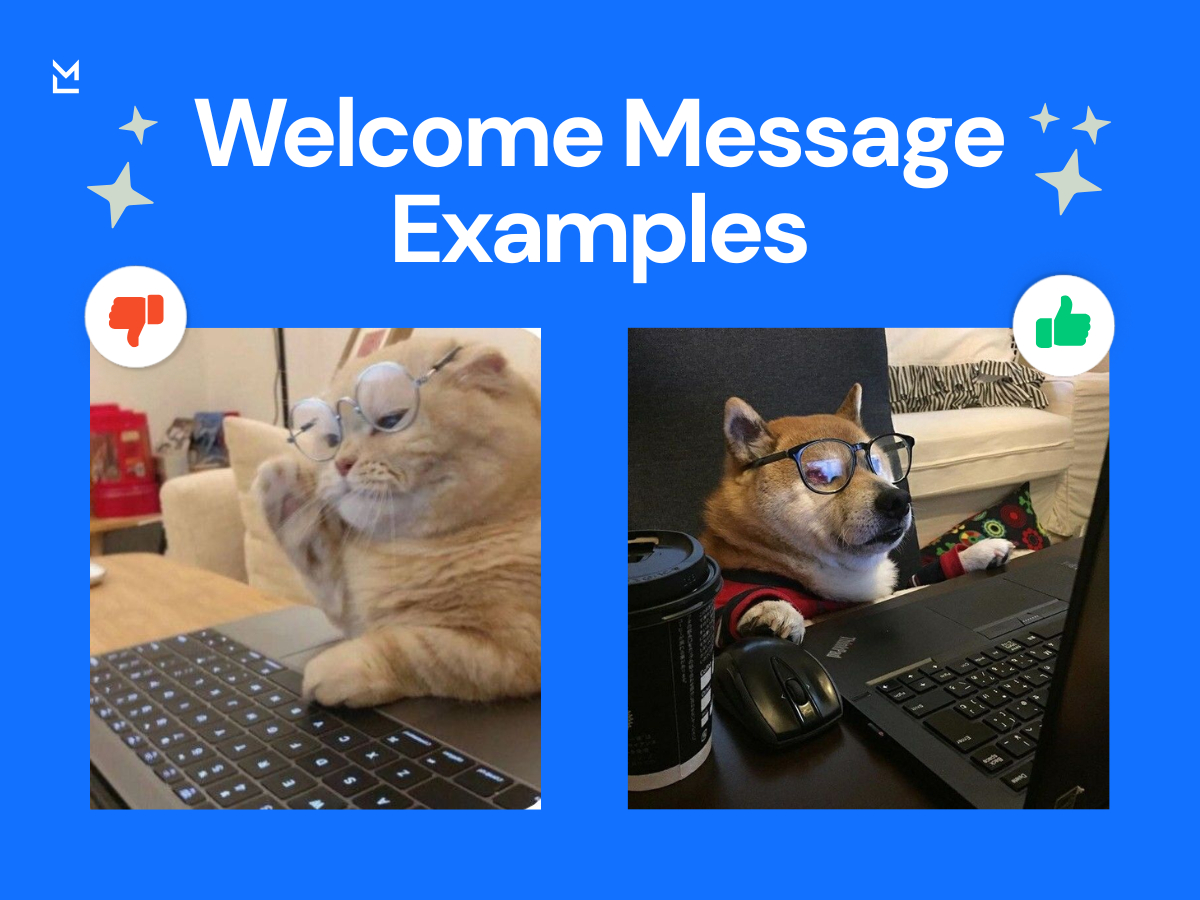
Written with help from MinutesLink - free AI meeting notetaker for online meetings.
Written with support from MinutesLink — a free AI notetaker for online meetings.
Think about the last time you started a new job. That waiting period after you’ve accepted the offer can feel like an information vacuum. A welcome message from your new employer bridges that gap beautifully. It turns an administrative process into a personal connection. A warm welcome validates the big decision your new hire just made, reassuring them they chose the right team and organisation.
It also sets the tone for company culture. Are you a formal, structured business or a creative, collaborative team? The tone of your welcome note communicates this immediately. It helps the new employee feel part of the team before they even set foot in the office (or log in remotely), eases first-day jitters, and makes them feel part of the family from the get-go.
The tone of your welcome message is key. It should be professional yet friendly, enthusiastic without feeling forced or insincere. You want the new hire to feel genuine excitement from their future manager and colleagues. This isn’t just a business transaction; you are welcoming a person into your work community.
Using phrases like “We are thrilled to have you on board” or “The whole team is so excited to start working with you” adds a personal touch. It validates their decision to accept the job offer and builds anticipation for their start date. Your goal is to make them feel less like a new hire and more like a team member whose fresh perspective is eagerly awaited.
The onboarding process is a key driver of long-term retention. A positive onboarding experience boosts engagement and makes employees feel connected to the company’s mission and values from day one. When new employees feel supported and welcomed, they integrate faster, contribute ideas sooner, and build strong relationships with colleagues.

Before we look at what to include in a welcome message, it helps to understand why it matters - both for HR metrics and for legal safety. Below are three practical angles: metrics, real cases, and compliance.
A welcome message is more than a friendly note - it’s a measurable HR lever. When done right, a concise, well-timed welcome message reduces uncertainty, shortens the time it takes a new hire to feel productive, and increases the likelihood they’ll stay with the company. In practical terms, the welcome message affects several HR metrics directly: employee retention, time-to-productivity, and onboarding satisfaction (onboarding NPS or simple post-onboarding CSAT).
Why this matters: a new hire’s first impressions shape their decision to stay, engage, and contribute. A clear welcome message sets expectations (start time, first-day plan, who to contact) and signals that the company is organized, supportive, and values the new employee. That clarity lowers friction on day one and turns administrative uncertainty into confidence - which leads to faster ramp-up and higher early engagement.
Practical tip: include a one-click pulse survey link in your welcome message (1–3 quick questions). That single action creates early feedback and becomes a simple KPI for HR and hiring managers.
Stories sell the idea better than theory. Below are short, humanized case templates you can adapt to your company data or use as standalone examples in the article.
Scenario: Company A sent a friendly welcome email the moment a candidate accepted the offer: brief intro from the manager, shipping notice for equipment, and a checklist for the first week.
Outcome: New hires reported feeling calmer and prepared; the company saw fewer first-day no-shows and faster technical setup.
Why it works: Early, clear communication converts excitement into readiness - a small gesture that removes a big source of stress.
Scenario: Company B paired a personalized welcome message with a day-by-day first-week agenda and short videos from team members.
Outcome: New hires hit early milestones more quickly and reported higher confidence in one-on-one manager check-ins.
Why it works: Combining personal tone with concrete next steps balances emotional connection and practical clarity.
Quick takeaway for HR practitioners: test small, measurable changes - a single improved welcome message plus one pulse survey - and track the metrics above. Iteration beats perfection.

A warm welcome should never create legal or compliance risk. Keep your welcome communications friendly and practical - and also legally sound. Below are simple, practical rules to follow.
If you must share contracts or identity-verification forms, use secure portals, password-protected attachments, or your HRIS - not plain email.
Only request or reference personal data that’s strictly necessary for onboarding (e.g., “Please bring an ID for verification”). For anything beyond that, explain why you need it and how it will be protected.
A welcome email is not the employment contract. Avoid definitive promises (e.g., “You will receive X bonus after 1 month”) unless they are contractually binding. Prefer phrasing like “planned” or “expected.”
Keep copies of welcome messages and any linked checklists in your HR system so you can demonstrate consistent, documented onboarding practices if needed.
Example safe clause to include in a welcome message:
“This message is an informational welcome and does not replace any terms outlined in your signed employment contract. Please review official documents in the employee portal.”
Practical checklist for HR/legal teams:
A great welcome message is warm and informative. While flexible, certain elements should always be included:
Always start with a genuine greeting. Address the new employee by their first name to establish an immediate personal connection.
Example:
“On behalf of the whole team, I am so excited to welcome you to [Company Name]!”
Restate the new role and department to help the employee solidify their identity within the organization.
Example:
“We are thrilled to have you bring your skills to the team as our new [Job Title]. We know you’ll be a great addition to the [Department Name] department and can’t wait to see what you’ll achieve.”
Introduce their direct manager and a couple of key colleagues to reduce first-day anxiety.
Example:
“You’ll be reporting to [Manager’s Name], who is looking forward to helping you get settled in. I’ve also let [Colleague #1] and [Colleague #2] know about your arrival and they are excited to meet you.”
This section is key to reducing first-day anxiety. Clearly outline all practical details your new hire needs. Don’t make them guess or search through old emails.
This table provides a clear overview of all the essential first-day details to help new hires feel prepared and confident.
Give the new hire an exciting preview. Mention team meetings, welcome lunches, or virtual coffee chats.
Example:
“Your first day will be all about getting you set up and comfortable. We have a team meeting in the morning to introduce you to everyone. The rest of the week will be dedicated to onboarding where you’ll learn more about our systems and your new role.”
Provide links to the employee handbook, company policies, or videos about company culture. This helps new hires get a head start without pressure.
End on a high note. Reiterate how glad you are to have them and express confidence in what you’ll achieve together.
Example:
“We are confident you will help us reach new heights. We hired you because we believe in you and your ideas. We hope you have a great journey with us.”
Check out these welcome to the team message examples to help new employees feel supported, valued, and excited from their very first day.

Subject: Welcome to the Team at [Company Name]!
Hi [New Employee Name],
On behalf of the whole company I am delighted to welcome you to [Company Name]. We are looking forward to you joining us and are confident your skills will be an asset.
[Details about role, first day, dress code, and first week schedule.]
Best,
[Your Name, HR Department]
Subject: Hey [New Employee Name]! Can’t wait for you to join!
Hey [New Employee Name],
Thrilled you accepted the offer! The team is excited to work with you. We have a team lunch planned so you can meet everyone casually.
[Details about first day and expectations.]
Best,
[Manager’s Name]
Subject: Welcome to the [Department Name] Team!
Hi [New Employee Name],
Just a quick note from your new colleagues - we’re so glad you’re joining! Don’t hesitate to ask any of us for support or coffee.
Cheers,
[Department Name] Team
Subject: Welcome to the [Company Name] Team, [New Employee Name]!
Hi [New Employee Name],
Welcome aboard! Your company laptop and equipment should arrive by [Date]. Log in at [Time] on your first day. Virtual meetings scheduled to introduce you to the team.
Best,
[HR/Manager Name]
Subject: A Warm Welcome to the Team at [Company Name]!
Hi [New Employee Name],
On behalf of the team, we are thrilled to welcome you! Your first day is [Date].
Looking forward to seeing you soon and welcome aboard!
[Your Name / Manager]
Onboarding software automates tedious parts of the process so HR professionals and managers can focus on connection.
By using technology, you create a seamless, professional, and engaging onboarding experience.
Creating the perfect “welcome to the team” message is about being thoughtful and intentional. Remember what it feels like to be the new person and extend the kind of welcome you would want. A great welcome is the first step toward great work.
Take the time to create a message that is personal, informative, and encouraging. Let your new hires know you’re glad they’re here, that you can’t wait to see what they’ll do, and that you’re ready to support them as they start this new chapter.
Onboarding software automates the repetitive parts of hiring so HR and managers can focus on people. It sends welcome messages at the right moment, centralizes documents (handbooks, contracts), schedules first-day tasks, and tracks completion of onboarding milestones.
Why it matters: automation reduces manual errors, shortens time-to-productivity, and gives new hires a single place to find everything.
Quick tip: choose a system with pulse survey capability so you can collect feedback at day 7 and day 30.
Start with a warm, short welcome message that states the role, start date/time, manager name, and one action step (e.g., “complete this 2-minute form”). Keep tone friendly and specific - not generic.
Structure: 1) personal greeting, 2) one-line role confirmation, 3) practical first-day details, 4) one link (handbook or pulse survey), 5) encouraging close.
Pro tip: include a one-click pulse survey link (1–3 questions) to capture early sentiment.
A concise checklist improves clarity for new hires:
For remote hires, a welcome message + logistics are essential. Ship equipment before day one, include clear remote-login instructions, schedule video intros with the team, and set a virtual coffee in week one.
Human tip: add a 30-minute “meet your manager” calendar invite with an agenda so the first meeting feels structured, not awkward.
Track simple, actionable onboarding metrics: 30/90/180-day retention, time-to-productivity (days to first milestone), and onboarding NPS/CSAT from short pulse surveys (day 7 and day 30). Also monitor the % of first-month milestones completed on time.
Action: add a 1–3 question pulse survey link to your welcome message and report results monthly.